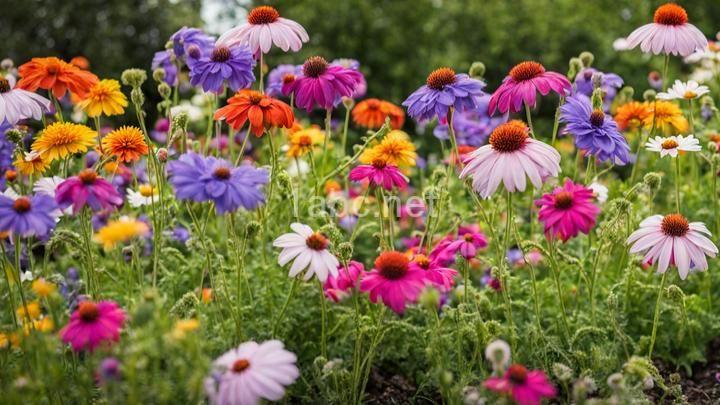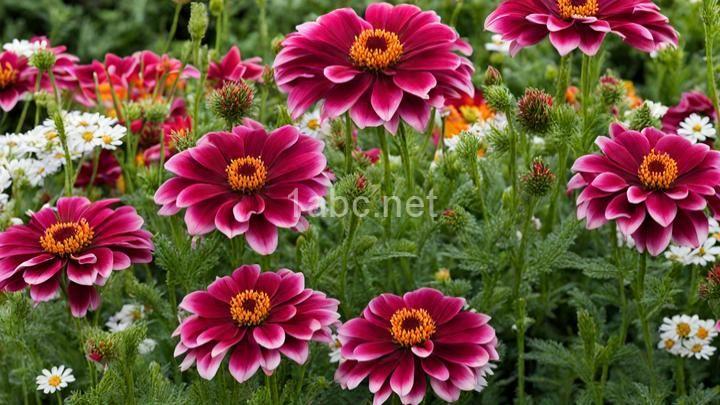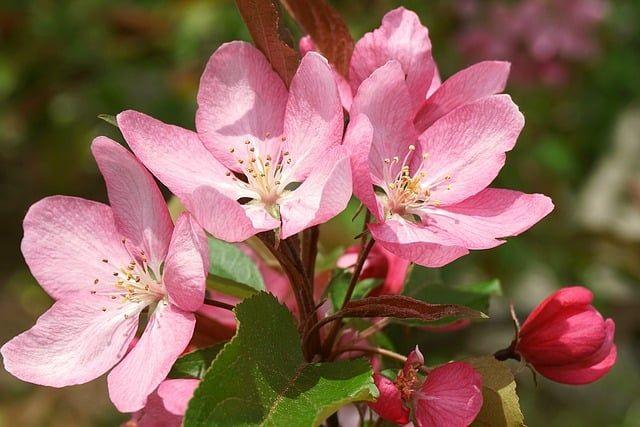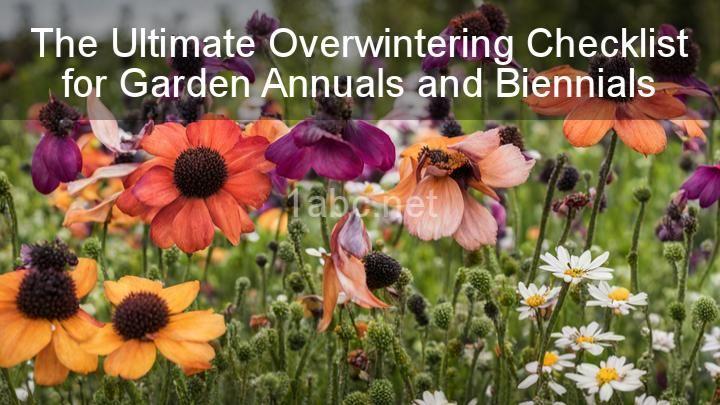The Ultimate Guide to Watering Annuals and Biennials in Your Garden
Introduction:
I. Understanding the Watering Needs of Annuals and Biennials:
II. Signs of Underwatering:
III. Signs of Overwatering:
IV. Best Practices for Watering Annuals and Biennials:
1. Watering Frequency:
2. Watering Techniques:
3. Watering Depth:
4. Time of Day:
V. Adjusting Watering Practices Throughout the Season:
Conclusion:

Introduction:
Welcome, fellow gardening enthusiasts! Today, we embark on a journey to uncover the secrets of watering annuals and biennials in your garden. As we all know, these vibrant and colorful plants are the showstoppers of any garden, attracting pollinators and bringing joy to our lives. But to truly enjoy their beauty, we must understand their watering needs. So grab your watering cans and let's dive into the ultimate guide to watering annuals and biennials!
I. Understanding the Watering Needs of Annuals and Biennials:
Before we delve into watering techniques, it's important to understand the difference between annuals and biennials. Annuals complete their life cycle within a year, while biennials take two years to mature and bloom. This difference in lifespan affects their growth patterns and, consequently, their water requirements. Therefore, it's crucial to research specific watering needs for different types of annuals and biennials. An excellent resource for this information is your local nursery or online gardening communities.
II. Signs of Underwatering:
As responsible gardeners, it's our duty to ensure our plants receive adequate water. But how do we know if our annuals and biennials are suffering from lack of hydration? Look out for signs of underwatering, such as wilting leaves, dry soil, or stunted growth. It's important to note that different species may exhibit unique signs, so it's essential to familiarize yourself with the specific signs for the plants in your garden. Early detection is key to prevent long-term damage, so keep a watchful eye on your plants!
III. Signs of Overwatering:
Believe it or not, overwatering can be just as harmful as underwatering. Excessive watering can lead to root rot and fungal diseases, causing irreparable damage to your precious plants. To avoid this, keep an eye out for symptoms of overwatering, such as yellowing leaves, moldy soil, or a foul odor emanating from the roots. By carefully observing your plants' responses to your watering routine, you can adjust accordingly and prevent any detrimental effects.
IV. Best Practices for Watering Annuals and Biennials:
Now that we're aware of the signs of both underwatering and overwatering, let's explore some best practices for watering annuals and biennials in your garden.
1. Watering Frequency:
When it comes to watering frequency, there are general guidelines to follow based on average weather conditions. However, it's important to adapt your watering routine to suit individual plant needs and environmental factors such as rainfall. Remember, it's not about sticking to a strict schedule but rather assessing plant moisture levels regularly to determine when watering is necessary.
2. Watering Techniques:
The way you water your annuals and biennials can make a significant difference in their overall health. Consider using a gentle spray nozzle or directly targeting the roots to ensure efficient watering. Avoid overhead watering methods that can promote the development of diseases. Additionally, mulching around your plants can help retain soil moisture and reduce evaporation, keeping your plants happy and hydrated.
3. Watering Depth:
Just like humans, plants need to quench their thirst from deep within. Watering deeply encourages healthy root growth, making your annuals and biennials more resilient to drought conditions. The appropriate watering depth will depend on the size of the plant and the type of soil. As a rule of thumb, water until the soil is moist to a depth of 6-8 inches. To ensure proper absorption, monitor soil moisture levels after watering.
4. Time of Day:
Timing is everything, especially when it comes to watering your garden. Ideally, water your annuals and biennials early in the morning or late in the afternoon to minimize water loss through evaporation. Of course, there may be exceptions for extremely hot climates or specific plant preferences, so use your judgment. However, it's crucial to avoid nighttime watering, as it can result in prolonged leaf wetness, creating a breeding ground for fungal diseases.
V. Adjusting Watering Practices Throughout the Season:
As the seasons change and your garden evolves, so too should your watering practices. Keep a close eye on your plants, as their watering needs may fluctuate depending on their growth and weather conditions. During periods of drought, you may need to water more frequently, while excessive rainfall may require adjustments to prevent waterlogging. Remember, your plants are constantly communicating their needs, so it's crucial to listen and adapt accordingly.
Conclusion:
Congratulations, dear readers! You've made it through the ultimate guide to watering annuals and biennials in your garden. Armed with this knowledge, you are now well-equipped to ensure the health and vitality of your vibrant plants throughout the growing season. Remember, gardening is a continuous learning experience, so don't be afraid to experiment, observe, and adapt as needed. With proper watering practices, your garden will thrive, attracting pollinators and bringing endless joy to your life. Happy gardening!
FREQUENTLY ASKED QUESTIONS
How often should I water my annual and biennial plants?
The frequency of watering annual and biennial plants can vary depending on several factors such as the specific plant species, local climate, soil type, and overall growing conditions. However, here are some general guidelines to help you determine how often to water them:
- Annual Plants: Annual plants typically have a shorter lifespan and complete their life cycle within a year. They usually have shallow root systems and are more sensitive to drought. In general, it's recommended to water annual plants about 1-2 times per week, providing sufficient water to keep the soil consistently moist but not waterlogged. Monitor the moisture level by checking the top few inches of soil and adjust the watering frequency as needed.
- Biennial Plants: Biennial plants have a two-year life cycle, usually flowering and producing seeds in their second year. During their first year, they focus on establishing their root systems. During this stage, it's essential to provide adequate moisture to encourage strong root development. Water biennial plants deeply once or twice a week to ensure the soil is evenly moist down to the roots.
Remember that these are general guidelines, and it's crucial to consider the specific needs of each plant species and adapt the watering schedule accordingly. Always observe your plants closely, regularly check soil moisture, and adjust watering as necessary to avoid overwatering or underwatering.
What is the best time of day to water my annuals and biennials?
The best time of day to water your annuals and biennials is early in the morning. This allows for the water to penetrate the soil and reach the roots before the heat of the day evaporates it. Watering in the morning also helps to prevent the growth of fungus and other diseases, as the foliage has time to dry out during the day. Additionally, watering in the morning ensures that the plants have enough hydration to withstand the hot afternoon temperatures.
How much water do annuals and biennials need?
Annuals and biennials have varying water requirements depending on factors such as their specific species, the climate they are grown in, and the stage of their growth cycle. Generally, these types of plants need regular watering to ensure healthy growth and flower production. It is important to keep the soil evenly moist, but not waterlogged, as excessive water can lead to root rot and other problems.
As a rule of thumb, most annuals and biennials prefer consistently moist soil, especially during periods of active growth and flowering. Regular watering, typically about 1-2 inches (2.5-5 cm) per week, should be sufficient for most of them. However, it's always recommended to check the specific water needs of the particular plants you are growing, as some may require more or less water.
Keep in mind that environmental factors such as temperature, humidity, and sunlight intensity can also influence the water requirements of annuals and biennials. Monitoring the moisture levels of the soil, observing the plants for signs of drought stress (wilting, yellowing leaves), and adjusting the watering frequency accordingly will help you determine the appropriate watering schedule for your specific plants.
Can I overwater my annual and biennial plants?
Yes, overwatering can be harmful to both annual and biennial plants. While plants need water to survive, excessive watering can lead to root rot and other problems. It is important to provide plants with the appropriate amount of water based on their specific needs. Regularly check the soil moisture and only water when necessary.


